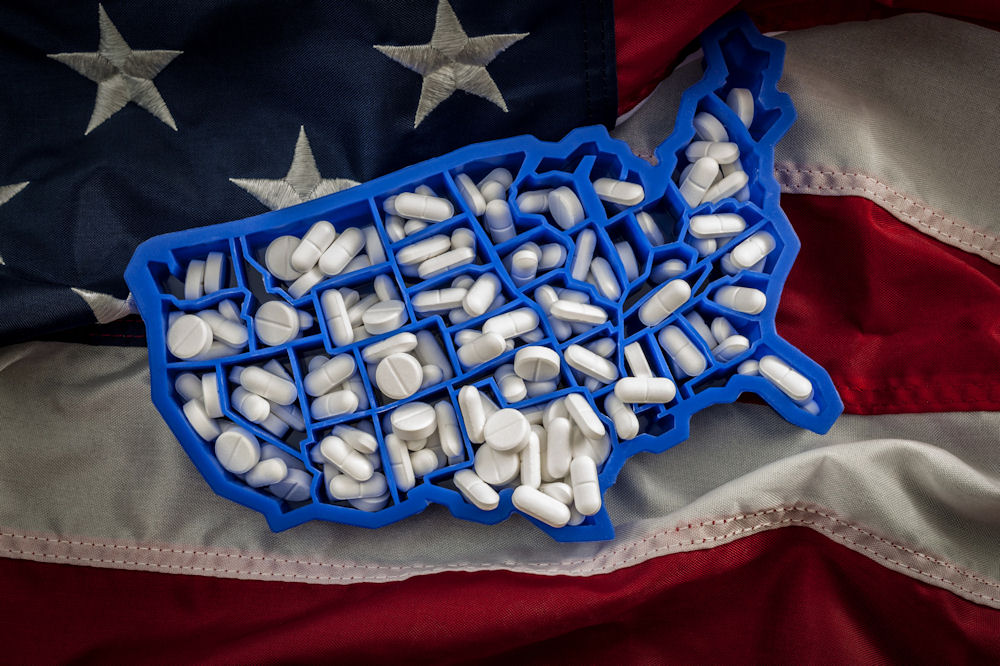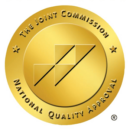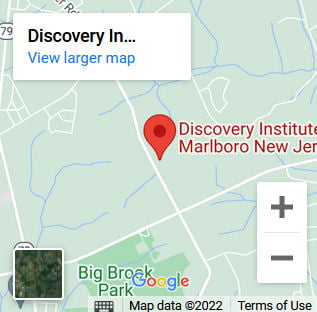The opioid crisis continues to be a critical public health issue in the United States, with fentanyl emerging as a central component of this epidemic. Fentanyl, a synthetic opioid, is estimated to be 100 times stronger than morphine and is often prescribed for severe pain management. However, its potency has led to widespread misuse and a staggering increase in opioid-related deaths. The Centers for Disease Control and Prevention (CDC) reported that by 2021, fentanyl was involved in approximately 66% of all opioid overdose deaths.
Seeking professional help is crucial for overcoming addiction. Evidence-based treatment programs, including medication-assisted treatment (MAT) and therapy, can be tailored to individual needs. These holistic approaches, combined with support groups, provide vital resources for recovery. Rehabilitation facilities commonly include detoxification, therapy, and aftercare planning to support long-term recovery. Addressing the opioid crisis requires a collective effort toward education, empathy, and access to comprehensive treatment options.
History of the Opioid Crisis
Fentanyl’s alarming rise has shifted the landscape of addiction. In the past, prescription opioids like oxycodone and hydrocodone were the primary culprits in addiction. As regulations tightened, individuals with prescriptions began to turn to the illicit market, where fentanyl is frequently mixed with other drugs like heroin and cocaine, often without users’ knowledge. This unintentional consumption dramatically increases the risk of fatal overdoses.
A significant challenge in combating this crisis is the societal stigma surrounding addiction, making it difficult for many to seek help. Addiction should be recognized as a disease that necessitates compassionate intervention and support. Community education can help change perceptions and foster understanding.

Understanding Fentanyl
Fentanyl is an opioid that is estimated to be up to 100 times stronger than morphine. It is frequently prescribed for severe pain management, particularly in medical settings involving surgery or cancer treatment. However, its potency has led to widespread misuse. Illicitly manufactured fentanyl is often mixed with other drugs—such as heroin and cocaine—without users being aware. This unintentional consumption can lead to fatal overdoses, even with small amounts. Fentanyl’s powerful effects can cause respiratory depression, which is the most common cause of death in opioid overdoses.
The Centers for Disease Control and Prevention (CDC) has reported that fentanyl is a significant contributor to the staggering rise in opioid-related deaths. By 2021, it was involved in approximately 66% of all opioid overdose deaths in the U.S. This alarming statistic underscores the need for a greater public understanding of fentanyl’s risks.
The Evolving Landscape of Opioid Addiction
In the past, prescription opioids such as oxycodone and hydrocodone were primarily implicated in addiction cases. Many individuals found themselves dependent on these medications after receiving prescriptions for legitimate medical reasons. With increasing awareness of the addictive nature of these drugs, regulatory measures were implemented to control their distribution. This led to a shift as many users, confronted with limitations on prescription availability, turned to the illicit market. Unfortunately, this transition has resulted in dire consequences, with fentanyl emerging as the lethal alternative.
Fentanyl’s presence has not only changed the nature of addiction but also complicated treatment. Traditional recovery methods often centered around weaning individuals off prescription opioids. The introduction of fentanyl, often alongside other substances, has rendered the landscape riskier. Users may unknowingly consume a lethal product, complicating efforts to minimize harm and guide individuals into recovery.

The Stigmatization of Addiction
One of the most significant barriers to addressing the opioid crisis is the stigma surrounding addiction. Many individuals suffering from substance use disorders feel shame and are reluctant to seek help. This societal stigma can exacerbate feelings of isolation and despair, making recovery even more challenging. Communities need to recognize that addiction is not a moral failing but a disease that requires compassionate intervention and support.
Education is key in combating the stigma associated with addiction. Community programs focused on awareness can help to change perceptions. Education campaigns can demonstrate that addiction affects individuals and families from all walks of life, fostering a more empathetic response.
The Importance of Seeking Professional Help
When it comes to overcoming addiction, seeking professional help is paramount. Medical professionals and addiction specialists can provide evidence-based treatment options tailored to individual needs. Treatment often involves a combination of medication-assisted treatment (MAT) and counseling. MAT uses medications such as buprenorphine or methadone to alleviate withdrawal symptoms and cravings, combined with counseling to address the psychological aspects of addiction. This holistic approach has proven to be effective in aiding recovery.
In addition to MAT, various therapeutic modalities—such as cognitive-behavioral therapy—can help individuals develop coping mechanisms to handle triggers and challenges without resorting to substance use. Support groups, such as Narcotics Anonymous, can provide a community of shared experiences, fostering a sense of belonging that is essential for recovery. The role of peer support cannot be underestimated, as many individuals find inspiration and motivation in the stories of others who have triumphed over addiction.
The Evolving Landscape of Opioid Addiction
In the past, prescription opioids such as oxycodone and hydrocodone were primarily implicated in addiction cases. Many individuals found themselves dependent on these medications after receiving prescriptions for legitimate medical reasons. With increasing awareness of the addictive nature of these drugs, regulatory measures were implemented to control their distribution. This led to a shift as many users, confronted with limitations on prescription availability, turned to the illicit market. Unfortunately, this transition has resulted in dire consequences, with fentanyl emerging as the lethal alternative.
Fentanyl’s presence has not only changed the nature of addiction but also complicated treatment. Traditional recovery methods often centered around weaning individuals off prescription opioids. The introduction of fentanyl, often alongside other substances, has rendered the landscape riskier. Users may unknowingly consume a lethal product, complicating efforts to minimize harm and guide individuals into recovery.
Comprehensive Treatment Options
Rehabilitation facilities vary widely in their approaches; however, they commonly share core components, including detoxification, therapy, and aftercare planning. Detoxification—a medically supervised process for safely managing withdrawal symptoms—is typically the first step in recovery. Following this, therapy and counseling play an essential role in addressing the psychological components of addiction. Aftercare is crucial for sustaining recovery, and providing ongoing support and resources to prevent relapse.
Different individuals may require different treatment plans depending on their circumstances, history of substance use, and co-occurring mental health disorders. Personalized treatment is crucial for effective recovery and lasting change.

Prevention and Community Support
Preventive measures are increasingly viewed as essential components of addressing the opioid epidemic. Public health initiatives that educate communities on the dangers of drug use, particularly fentanyl, are vital in raising awareness. School education programs that inform youth about the risks associated with substances can help deter initial use and foster a culture of prevention.
Community outreach programs targeting high-risk populations can also significantly impact prevention efforts. By providing individuals with resources and education, communities can begin to alter the trajectories of those at risk of addiction.
First responders play a critical role in immediate crisis management. The administration of naloxone, a medication that can reverse opioid overdoses, has undoubtedly saved countless lives. Training first responders, medical professionals, and community members in administering naloxone is invaluable. Timely intervention can be the difference between life and death.
The Role of Legislation
Effective policies and legislative advocacy are essential to addressing the broader systemic issues contributing to the opioid epidemic. Policies prioritizing access to treatment and mental health services can create pathways for individuals seeking help. Funding for addiction treatment centers and mental health resources is necessary for making positive strides in combating addiction.
Additionally, criminal justice reform can facilitate access to treatment rather than punishment for those struggling with substance use disorders. Encouraging individuals to seek help—rather than facing criminal charges—can significantly mitigate the stigma associated with addiction.
How New Jersey is Combatting the Opioid Crisis?
The opioid epidemic, driven in large part by the dangers posed by fentanyl, requires a united effort from communities, healthcare providers, policymakers, and families. A multifaceted approach is critical to addressing this complex issue. Raising awareness about fentanyl and the realities of addiction, coupled with comprehensive treatment options, can empower individuals to seek the help they need.
At Discovery Institute in Marlboro, New Jersey, the fentanyl detox process is managed in a safe and supportive environment, ensuring that clients experience minimal discomfort during withdrawal. The center utilizes evidence-based practices, including medication-assisted treatment (MAT), which can effectively alleviate cravings and withdrawal symptoms, allowing clients to focus on their recovery journey.
Following detox, the rehabilitation program emphasizes addiction counseling to address the psychological aspects of addiction. Clients participate in various therapeutic modalities, including individual therapy and group therapy, which fosters a sense of community and shared understanding.
Additionally, we place a strong emphasis on aftercare planning, ensuring ongoing support after treatment. This holistic approach provides clients with the tools and strategies needed to maintain long-term sobriety. By addressing both the physical and mental components of addiction, we empower individuals to reclaim their lives and embark on a path to recovery. Seeking help is the crucial first step, and the Discovery Institute is here to guide you through it.

How the Discovery Institute Can Help You?
Understanding that addiction is a disease that necessitates compassion, support, and professional intervention can foster an environment where individuals feel safe to pursue recovery. As the crisis continues to evolve, maintaining a focus on education, prevention, and access to effective treatment remains vital to saving lives and healing communities.
At the Discovery Institute in Marlboro, NJ, we are dedicated to providing comprehensive detox and rehabilitation services for individuals struggling with substance use disorders. With a compassionate and experienced team of medical professionals and addiction specialists, the center offers personalized treatment plans tailored to each individual’s unique needs. Contact us today to learn more.



